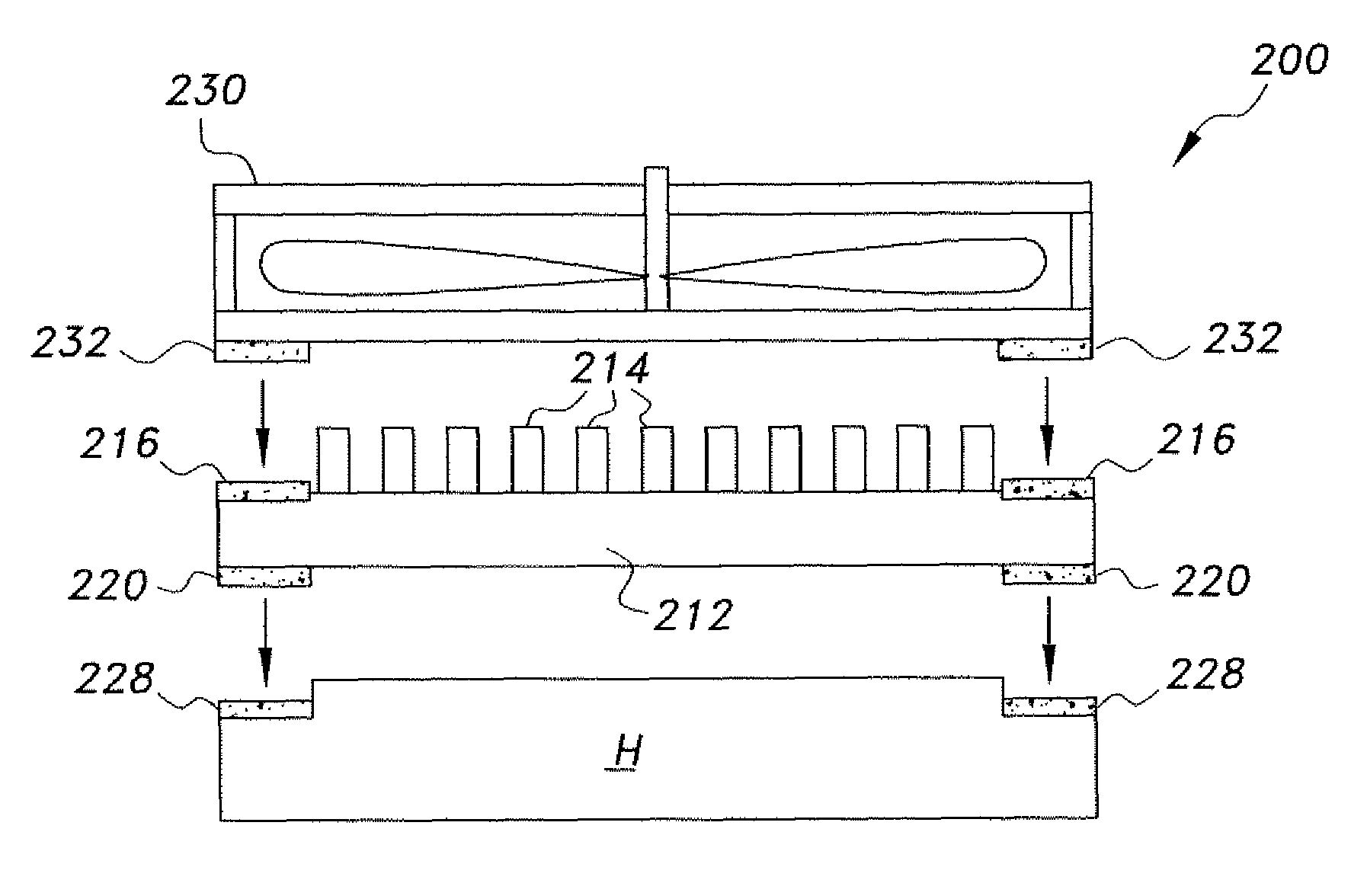Add-on heat sink
a heat sink and add-on technology, applied in the direction of electrical equipment construction details, lighting and heating apparatus, laminated elements, etc., can solve the problems of reducing performance, /or generating undesirable electromagnetic noise, and many common electro-mechanical devices used at home, office and elsewhere, and achieves a small footprint and negative structural impact.
- Summary
- Abstract
- Description
- Claims
- Application Information
AI Technical Summary
Benefits of technology
Problems solved by technology
Method used
Image
Examples
Embodiment Construction
[0019]The add-on heat sink, the first embodiment of which is generally referred to by the reference number 10, provides fast and easy installation of the heat sink in minimal space. As shown in FIGS. 1 and 2, the add-on heat sink 10 includes an elongate base 12 and a plurality of extending fins 14 (for providing greater surface area for the dissipation of heat) attached to the base 12. The base can be a rectangular plate constructed from thermally conductive plastics, metals, composites and / or combinations thereof. The fins 14 are constructed as smaller rectangular plates extending perpendicularly from the top surface of the base 12 and made from similar materials. Although the fins 14 are shown to be rectangular, any shape can be used to construct the fins 14. Additionally, the fins 14 can be arranged in various configurations, such as a fan shape, and may extend at non-perpendicular angles and lengths, so long as the desired heat transfer performance is maintained. The fins 14 pro...
PUM
| Property | Measurement | Unit |
|---|---|---|
| thermally conductive | aaaaa | aaaaa |
| heat | aaaaa | aaaaa |
| pressure | aaaaa | aaaaa |
Abstract
Description
Claims
Application Information
 Login to View More
Login to View More - R&D
- Intellectual Property
- Life Sciences
- Materials
- Tech Scout
- Unparalleled Data Quality
- Higher Quality Content
- 60% Fewer Hallucinations
Browse by: Latest US Patents, China's latest patents, Technical Efficacy Thesaurus, Application Domain, Technology Topic, Popular Technical Reports.
© 2025 PatSnap. All rights reserved.Legal|Privacy policy|Modern Slavery Act Transparency Statement|Sitemap|About US| Contact US: help@patsnap.com



